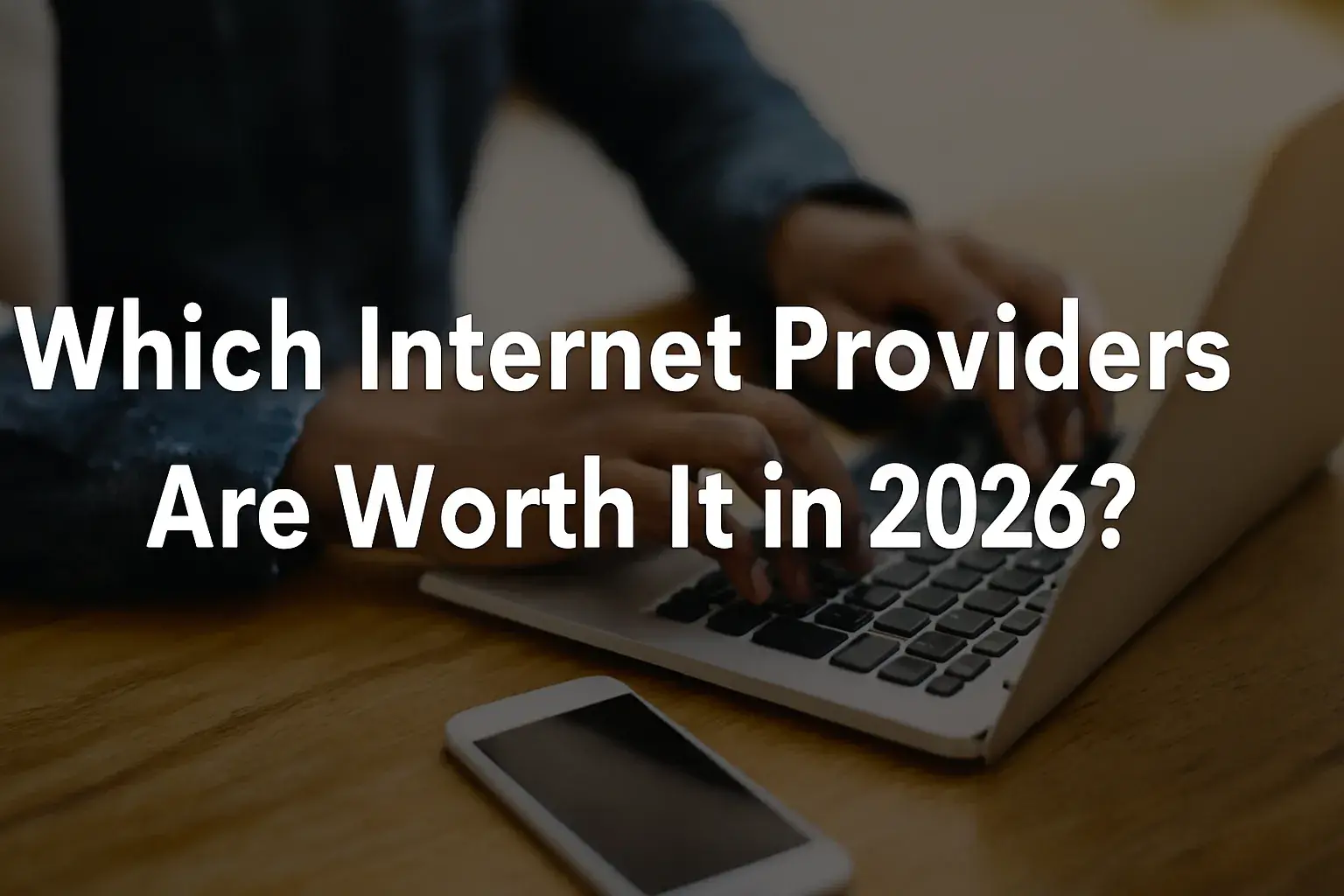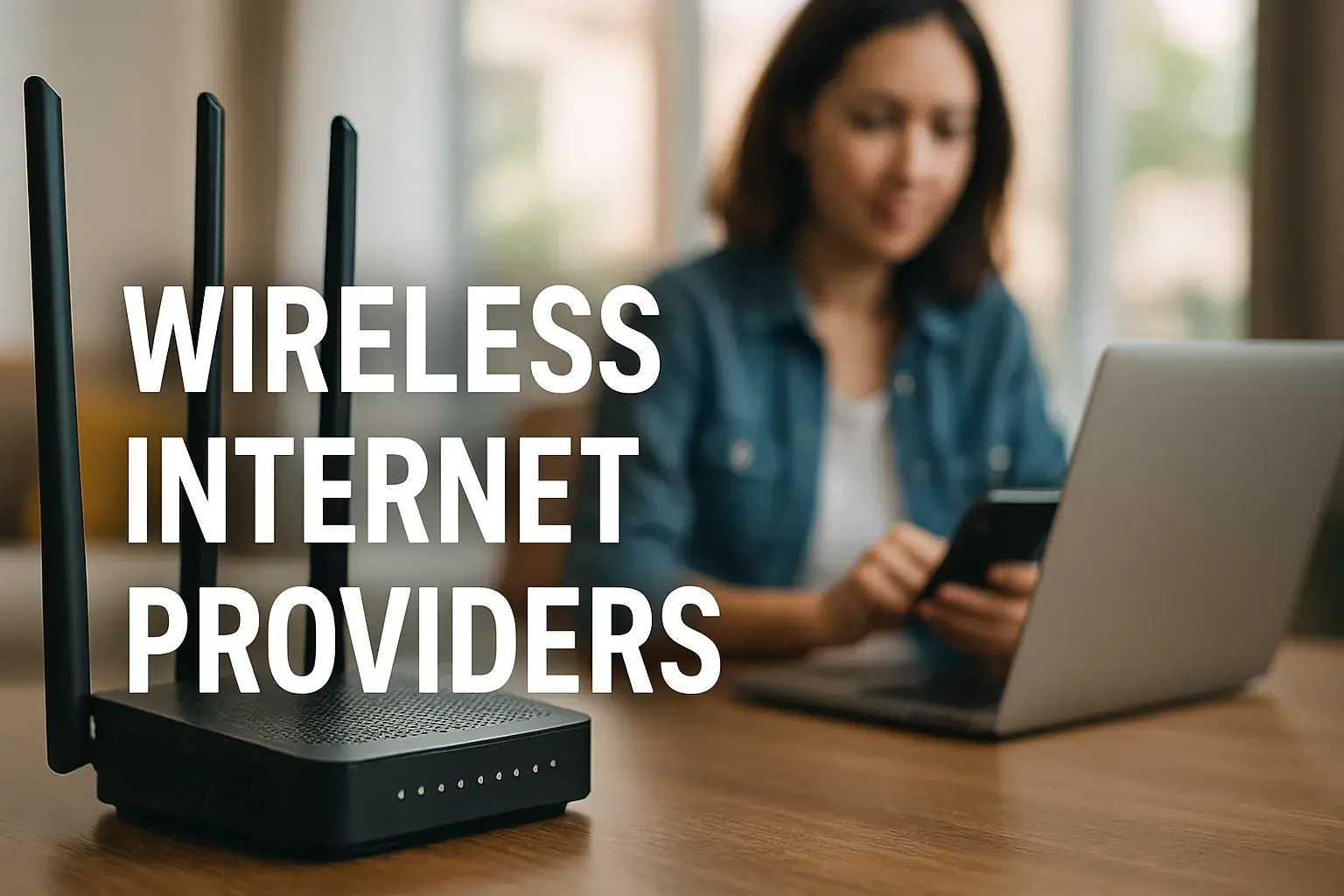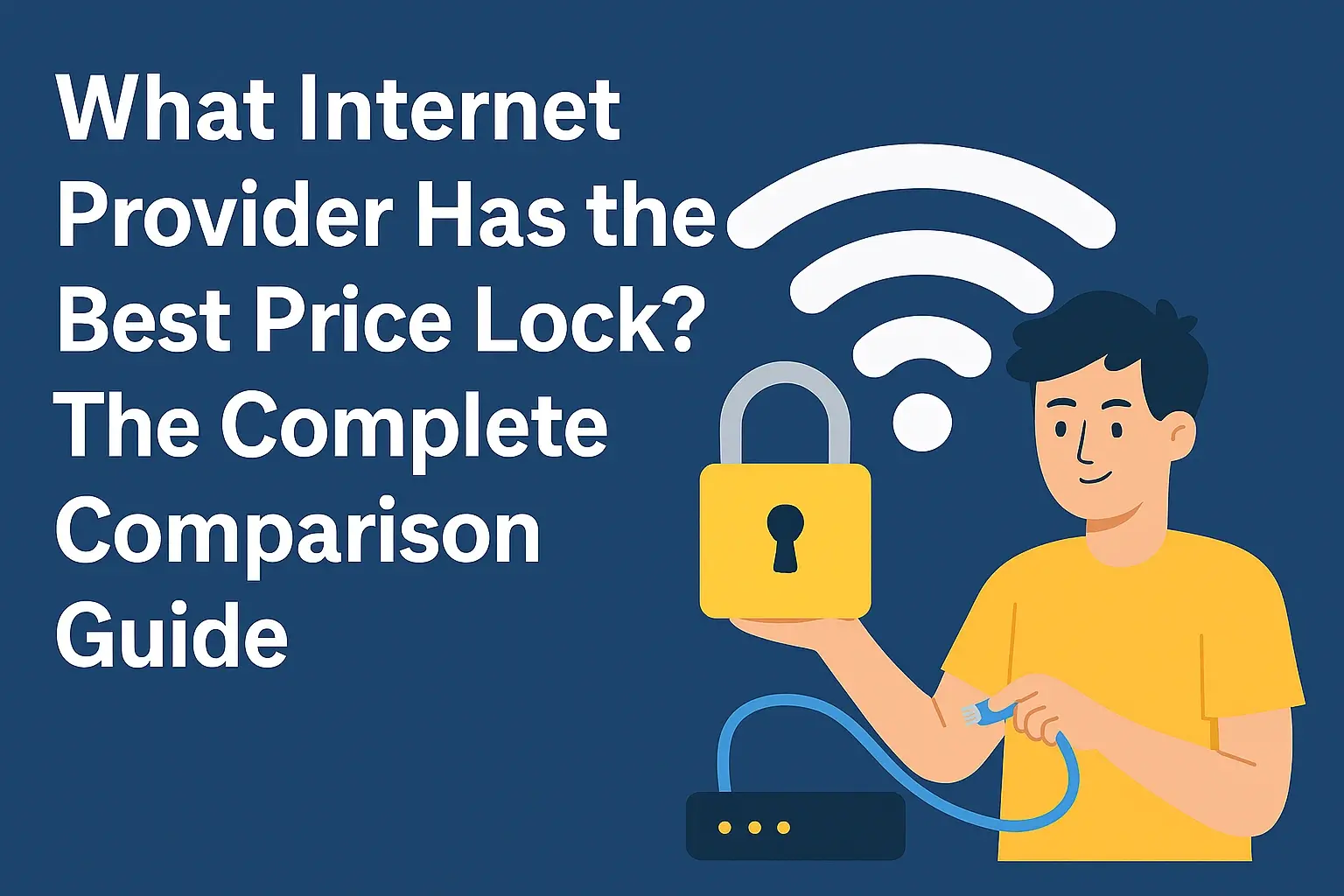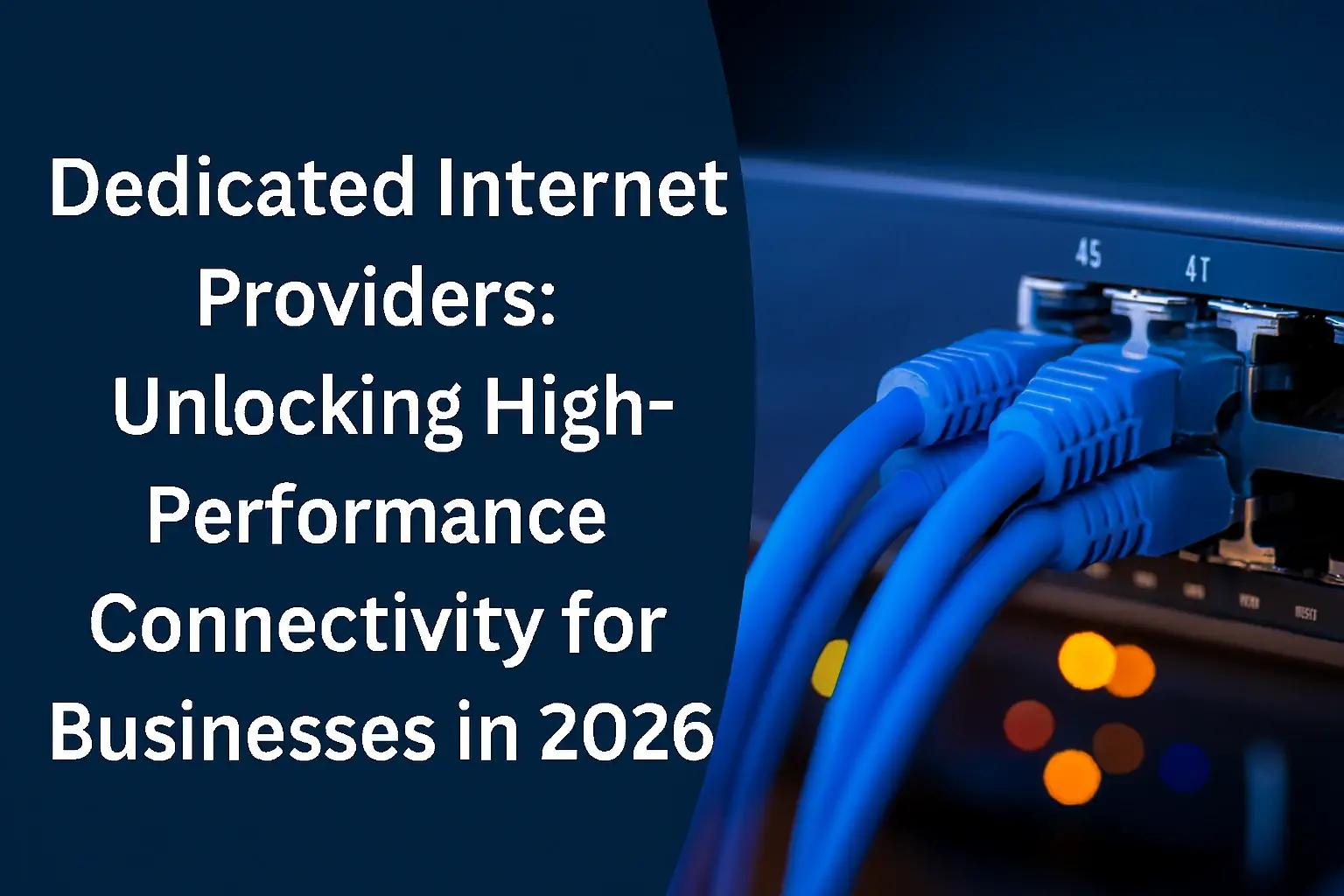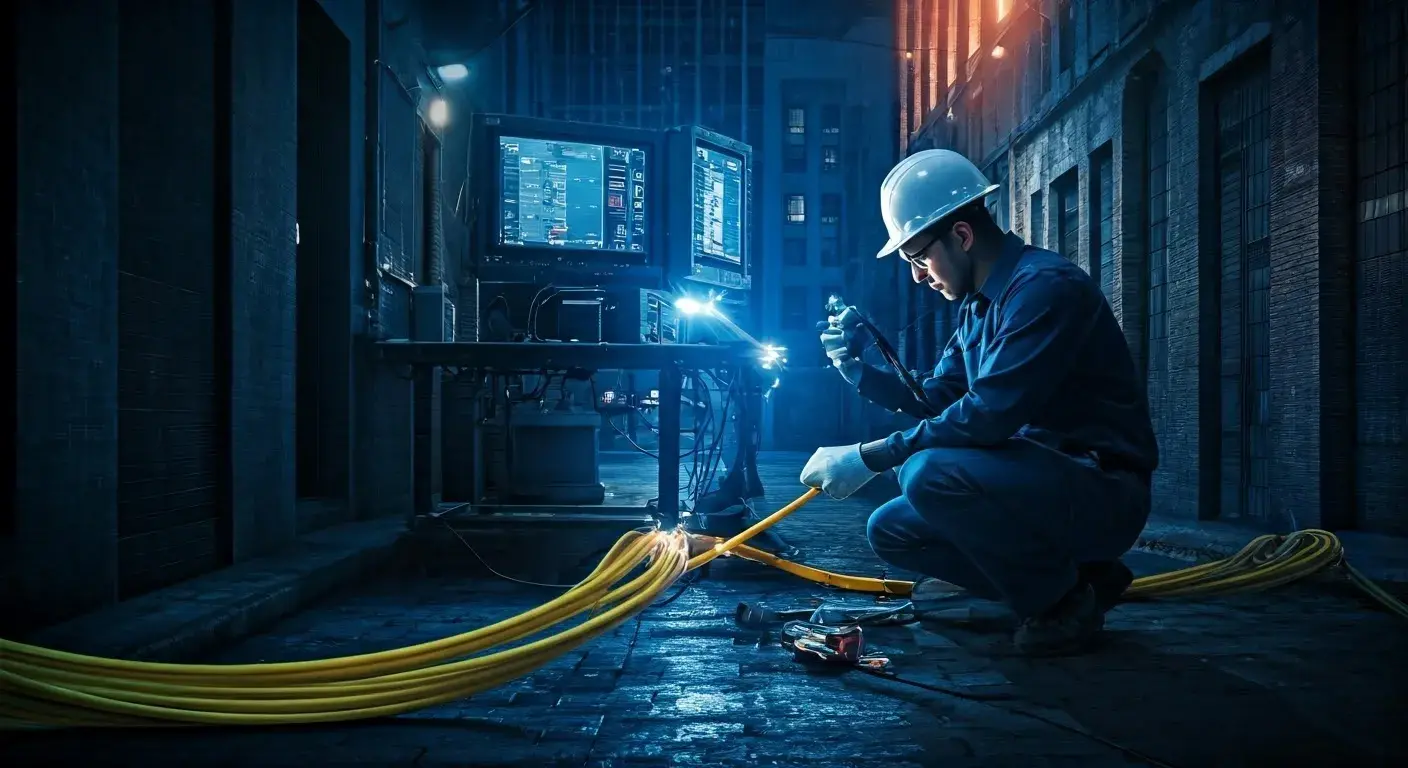
In today's world, having a fast and reliable internet connection is very important. There are many internet service choices, which can make picking the right one tough. This blog post will look at two popular options: Broadband and Fiber internet. We will compare both to help you decide. We'll discuss the basic broadband technology, speeds, how often they work, where they are available, and how much they cost. This way, you can choose the internet service that fits your online use and budget best.
Understanding Broadband and Fiber Internet
Broadband internet is a broad term that covers many types of fast internet connections. This includes DSL, cable, and satellite. These connections use current equipment like telephone lines and coaxial cables from cable TV, or satellite dishes. Broadband offers much faster speeds than the old dial-up connections. However, the speeds can change a lot based on the type of technology used and the service provider.
On the other hand, fiber internet is a newer and better technology. It sends data through thin optic cables using light pulses. This allows for very fast speeds and high reliability. Though fiber internet is not as common as traditional broadband options, it is becoming popular quickly, especially in cities and nearby areas.
The Basics of Broadband Internet
Cable internet is a well-liked type of broadband internet service. It uses the same coaxial cables that are for cable television. This makes it easy to set up and available to many people. Cable internet providers often have different speed options. They can offer basic plans for casual browsing or high-speed plans for streaming and gaming.
Another common type of broadband internet is Digital Subscriber Line (DSL). DSL connects through existing telephone lines to provide internet. This makes it a good choice in areas where cable internet or fiber might not be available. However, DSL internet is usually slower, especially for uploading. This can make things like video conferencing or transferring large files hard.
Both cable and DSL use the same copper wire infrastructure. Because these connections are shared, speeds can slow down during peak usage times. This happens when many users in a neighborhood go online at the same time. Such congestion can affect the performance and reliability of broadband internet, especially during busy hours.
Introduction to Fiber Internet Technology
Fiber internet, also known as fiber optic internet, is one of the best types of internet available. It uses thin and flexible optic cables made from glass or plastic fibers to send data as light pulses. This way of sending data allows for much faster speeds and a more reliable internet connection.
Unlike traditional broadband, fiber internet does not get disturbed by electrical or magnetic signals. This feature makes it very dependable. You can enjoy a stable internet experience, even when many people are using it at the same time. Plus, fiber optic cables can carry much more data than copper wires over long distances, giving users strong internet connectivity.
The great speed and dependability of fiber internet make it perfect for heavy online activities. If you are involved in competitive online gaming, holding live video calls, or streaming high-definition videos on many devices at once, fiber internet gives you a smooth and enjoyable online experience.
How Broadband and Fiber Internet Work?
Broadband internet uses existing systems to provide online services. It can work through coaxial cable for cable internet or using telephone lines for DSL. Broadband sends data with electrical signals. These signals move through a network of cables, linking your device to your service provider and the wider internet.
In contrast, fiber internet uses a different method. Instead of electrical signals, it sends data using light pulses through optic cables. This newer technology offers very fast speeds and less signal loss over long distances. A fiber optic modem at your home changes these light signals back into electrical signals that your devices can use.
The Technical Side of Broadband
Establishing a broadband connection means connecting your device, like a computer or router, to a modem. This modem acts as a link between your devices and the service provider's network. The type of modem you use depends on your chosen broadband service. For cable internet, you will need a cable modem. For DSL, a DSL modem is necessary.
When the modem gets data from your service provider, it changes it into a format that your device can read, allowing you to go online. Keep in mind that broadband speeds can change a lot. They depend on the type of broadband service you have, how far you are from the service provider's equipment, and how busy the network is during peak usage times.
Additionally, some broadband connection plans might have data caps. This means there is a limit on how much data you can use in a certain time. If you go over this limit, you could face extra charges or slower speeds. It’s essential to think about your data needs when picking a broadband plan.
The Mechanism Behind Fiber Optics
Fiber internet, often called optic internet, uses light to send data. The process starts when the service provider converts data into light signals. These light signals travel very fast through thin glass or plastic tubes known as optic cables.
Unlike electrical signals used in traditional broadband, light signals do not lose strength over long distances. This means Fiber internet can keep its speed and dependability even over far distances. Because of this, users get fast and steady internet connectivity.
When the light signals reach your home, a device known as an Optical Network Terminal (ONT) gets them. The ONT changes these light signals back into electrical signals. This makes it easy for your devices like computers, routers, and smart TVs to connect to the optical internet.
Speed and Performance: Broadband vs. Fiber
Fiber internet is faster and more reliable than traditional broadband options. It uses light signals for data transmission. Because of this, it can deliver much quicker download and upload speeds. You will notice this difference when doing activities that need a lot of bandwidth, like video conferencing, online gaming, and moving large files.
Broadband internet speeds are enough for basic tasks, like browsing and streaming. However, these speeds can change based on network congestion, how far you are from the service provider, and the type of broadband (like cable or DSL). When speeds vary, it can affect how well demanding online activities work. This may lead to issues like buffering, lag, and slower overall internet speeds.
Analyzing the Speed of Broadband Connections
Broadband connections usually have different download speed ranges. These are measured in megabits per second (Mbps). Some cable internet plans can have download speeds similar to entry-level Fiber plans. However, you should think about the inconsistency of Broadband. Cable internet uses shared bandwidth in neighborhoods. So, it can be slower during peak usage times when many people are online.
DSL is another type of Broadband. It is typically slower than both cable and Fiber. This is especially true for upload speeds. This can be a big problem for people who often upload large files, have video calls, or need a fast internet connection for work or fun.
The distance from your place to the service provider's central office can also affect the speed and performance of your internet. If you are farther away, the signal can be weaker. This may cause slower speeds and more delay, especially with DSL connections.
The Superior Speed of Fiber Internet
Fiber internet is different from traditional Broadband because it offers higher speeds. These speeds can reach up to gigabit levels (Gbps), which is 1000 Mbps. This big speed difference gives users a great online experience. They can download and upload large files in just seconds, stream high-definition videos smoothly on multiple devices, and enjoy lag-free online gaming.
Also, Fiber internet has lower latency than Broadband. Latency is the time delay between sending a request and getting a response, measured in milliseconds. Having lower latency is very important for online gaming, video conferencing, and other real-time tasks. It makes everything feel smoother and more responsive.
Another great thing about Fiber internet is that many providers offer unlimited data plans. With unlimited data, users can use the internet freely without worrying about data caps or extra fees. This makes Fiber internet a perfect choice for homes with heavy internet usage.
Reliability and Availability in the US
Broadband internet can be reliable or not depending on the type of technology, the service provider, and where you live. For example, DSL connections can lose signal over long distances. They can also be impacted by weather conditions. Cable internet is usually more reliable than DSL, but it can face network congestion during busy times, which can affect its performance.
Fiber internet is a better choice for reliability because it uses advanced technology and dedicated connections. Optic cables used in fiber internet do not bend or break easily like copper wires in traditional broadband. They are not hurt by electromagnetic interference and are less affected by weather conditions. This makes fiber internet more stable and consistent.
Broadband Reliability Factors
When looking at how trustworthy broadband services are, there are a few important things to think about. First, network congestion is a big issue for cable internet lovers, especially when many people are online at the same time. During busy hours, all the people in an area share the same cable line. This sharing can make the internet slow down a lot, which can cause buffering, lag, and a poor internet experience.
Next, weather conditions can affect how well some broadband services work. This is especially true for DSL connections. Heavy rain, snow, and very hot or cold weather can mess with the electrical signals in copper telephone lines, causing problems with internet connectivity. While cable internet is not as easily impacted by the weather compared to DSL, it can still have issues during bad storms or if the cables get damaged.
Finally, the reliability and quality of your chosen service provider are key to having a good internet experience. Things like the quality of their network, how they keep it maintained, and how quickly they respond to customer needs can all change how reliable your broadband connection will be. It's important to look into and compare the different providers in your area to find one known for being reliable.
Why Fiber is Considered More Reliable?
Fiber internet is known for being much more reliable than traditional broadband options like DSL and cable. This reliability comes from several important reasons. First, fiber optic cables use light signals to send data. This means they are not affected by electromagnetic interference, which can cause problems for copper wires used in broadband. This results in a more reliable connection.
Second, fiber internet is less affected by bad weather. Copper cables can run into issues with rain, snow, or extreme temperatures, but optic cables stay strong during these weather events. This makes for a more steady internet experience, even when conditions are tough.
Additionally, fiber internet often has dedicated connections. In contrast, cable internet usually shares bandwidth. A dedicated connection helps maintain speed and performance, even when many users are online at the same time during busy hours. With fiber, people are less likely to face slowdowns or interruptions because of network congestion. This makes fiber a highly reliable choice for heavy internet use.
Cost Comparison: Is Fiber Worth the Extra?
When you look at the cost of internet services, Broadband usually seems cheaper than Fiber internet. Broadband plans, especially DSL options, have lower monthly fees. This makes them a good choice for those on a budget. However, just checking the price of internet service can be misleading. It doesn't show the value you get from each choice.
Though Fiber internet plans may cost a bit more, it's important to think about the great speed, reliability, and extra features like unlimited data and lower latency. For people who use the internet a lot for work, entertainment, or talking to others, Fiber's better performance is often worth the small extra charge.
Understanding the Pricing of Broadband
The pricing of broadband options varies significantly depending on several factors, including the type of Broadband (cable or DSL), the chosen internet speed tier, the service provider, and any promotional offers available. Generally, DSL plans tend to be the most budget-friendly, followed by cable internet. However, comparing plans solely based on advertised prices can be deceptive, as additional costs might not be immediately apparent.
Always inquire about installation fees, equipment rental costs, and potential data overage charges when evaluating different broadband options. Some service providers offer bundled packages that combine internet with TV and phone services, which might seem cost-effective initially but require a thorough cost comparison to determine actual savings.
Evaluating the Cost of Fiber Internet
While fiber plans may cost more than traditional broadband, it's important to consider the value you get from optic broadband. Fiber internet often provides very fast speeds, reaching up to a gigabit. This means you can stream without problems, play games without lag, and download things quickly.
Additionally, optic broadband is very reliable. It does not get affected by things like bad weather or signal interference. This reliability is important for those who need a steady internet connection for work, study, or important communication.
Many fiber plans also offer great extras, like unlimited data. This means you don't have to worry about going over data limits or paying extra fees. This is especially helpful for families who use the internet a lot, ensuring they can enjoy online shows, gaming, and other high-bandwidth activities without interruption.
Conclusion
In conclusion, choosing between broadband and fiber internet depends on your needs. Broadband is widely available and usually cheaper. However, fiber is better for speed, reliability, and performance. If you want fast connections and can pay more, fiber might be a good choice. But if you are concerned about budget and availability, broadband could be a good option too. Think about how you use the internet to find out which connection is best for you. The right choice will make a big difference in your online experience.
